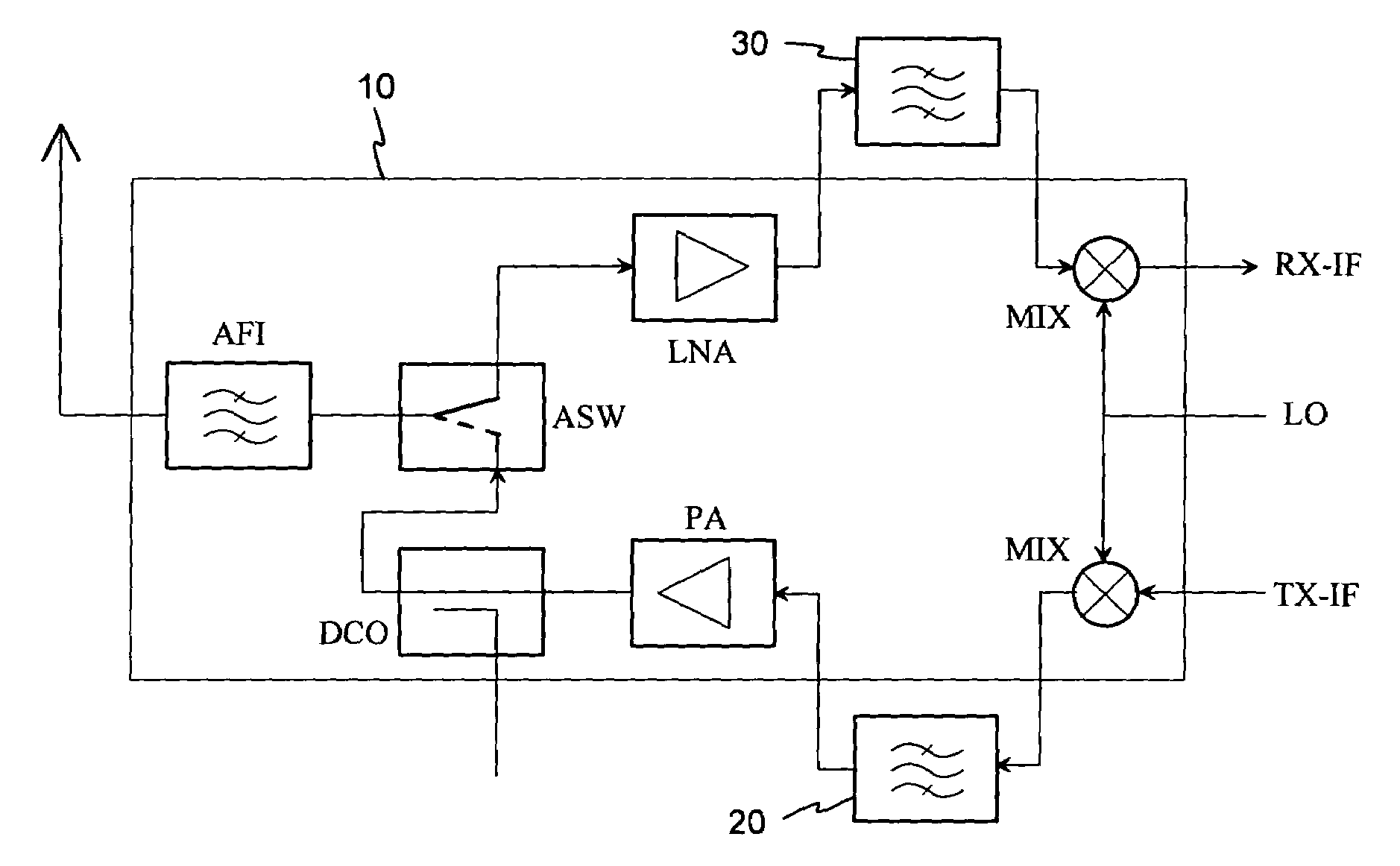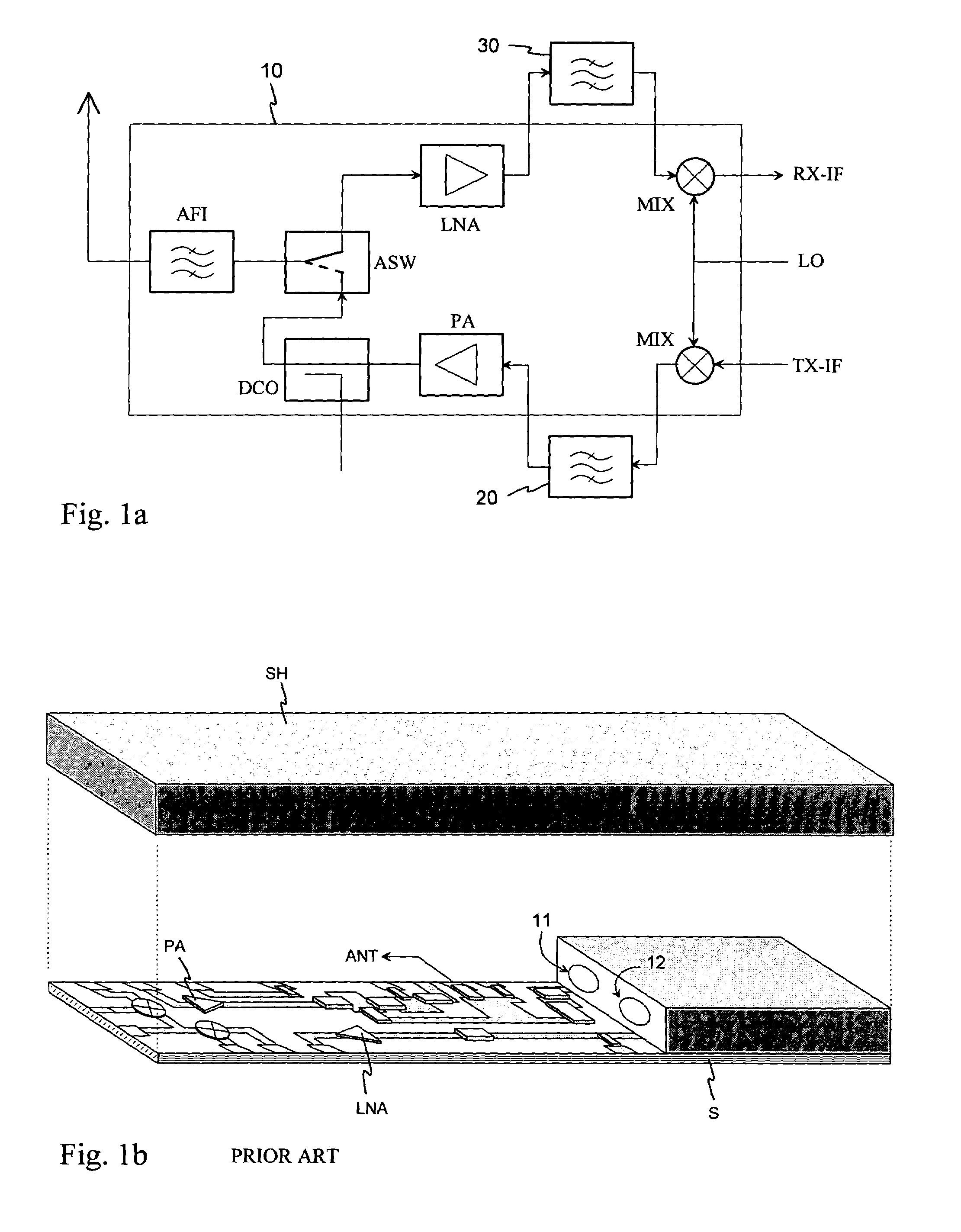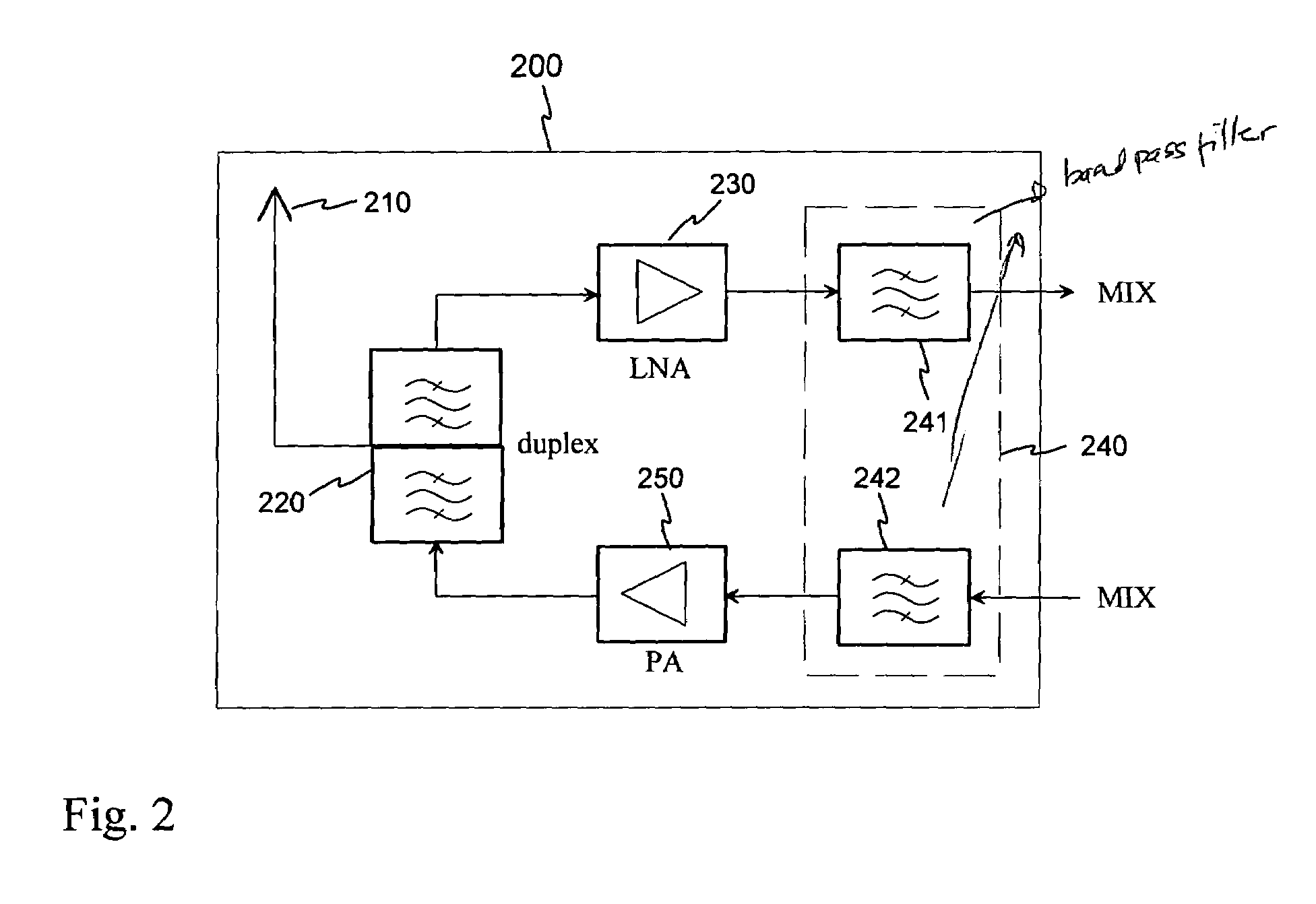Structure of a radio-frequency front end
a radio frequency front end and integrated technology, applied in the direction of resonant antennas, substantially flat resonant elements, multi-frequency-changing modulation transference, etc., can solve the problems of small communication apparatus and simplify design, and achieve the effect of reducing transmitter losses, reducing power amplifier design, and reducing the loss of receivers
- Summary
- Abstract
- Description
- Claims
- Application Information
AI Technical Summary
Benefits of technology
Problems solved by technology
Method used
Image
Examples
Embodiment Construction
[0021]FIGS. 1a and 1b were already discussed in connection with the description of the prior art.
[0022]FIG. 2 shows a block diagram of a possible radio-frequency front end of a communications apparatus. The front end 200 comprises an antenna 210, duplex filter 220, low-noise amplifier 230, bandpass filters 241 and 242, and a power amplifier 250. The antenna is connected to a bi-directional antenna port in the duplex filter 220. The receive port of the duplex filter is connected to the input of the amplifier 230, and the output of the amplifier 230 is connected to the input of the bandpass filter 241. The output of the filter 241 is connected to the receive branch mixer, and the input of the filter 242 is connected to the transmit branch mixer. The output of the filter 242 is connected to the input of the amplifier 250, and the output of the amplifier 250 is connected to the transmit port of the duplex filter 220.
[0023]Next it will be described how a front end 200 according to FIG. 2...
PUM
 Login to View More
Login to View More Abstract
Description
Claims
Application Information
 Login to View More
Login to View More - R&D
- Intellectual Property
- Life Sciences
- Materials
- Tech Scout
- Unparalleled Data Quality
- Higher Quality Content
- 60% Fewer Hallucinations
Browse by: Latest US Patents, China's latest patents, Technical Efficacy Thesaurus, Application Domain, Technology Topic, Popular Technical Reports.
© 2025 PatSnap. All rights reserved.Legal|Privacy policy|Modern Slavery Act Transparency Statement|Sitemap|About US| Contact US: help@patsnap.com



